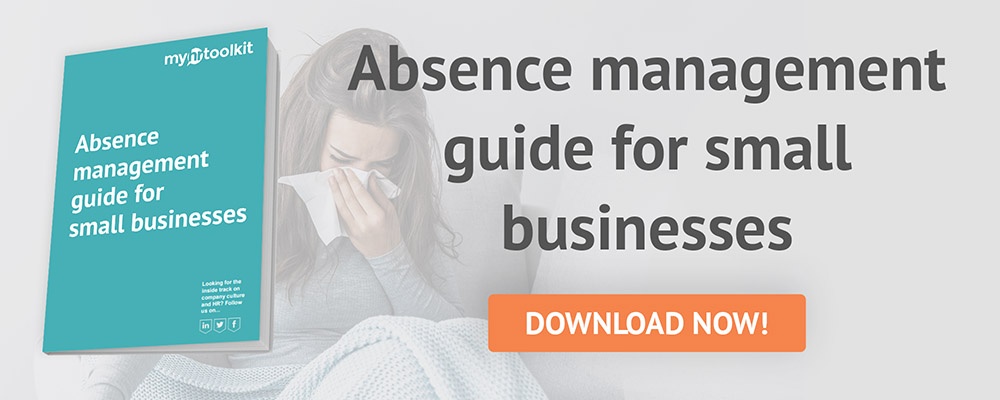Calculating sickness absence percentages can be highly beneficial for identifying potential issues that may be affecting your organisation’s productivity, such as absenteeism or an underlying health and safety issue that is causing more time off work. It's also fairly easy to calculate an employee's sickness rate, though the introduction of a software solution helps automate the process and save time.
How to calculate sickness absence percentages
To measure the amount of time lost to sickness absence or absenteeism within the business, you can use the following absence formula:
- Add up the total number of days that should have been worked (or hours for variable hours employees).
- Work out the total number of days/hours lost to sickness absence.
- Divide the number of days/hours lost by the number that should have been worked.
- Multiply this result by 100 to calculate a sickness absence percentage.
This can easily be done for an individual employee, for a team or department, or across the whole business. You may also want to do this for other forms of absence (including parental leave, compassionate leave etc.) to see how absence is affecting the organisation overall.
The Bradford Factor
Many businesses use the Bradford Factor to measure sickness absence rates across the organisation. This formula was developed in the 1980s to provide a benchmark measurement for absence, based on the idea that frequent short absences are more disruptive to a business than longer, less frequent absences. Read our guide to the Bradford Factor to find out more.
How does your workplace sickness rate compare to the UK average?
When it comes to assessing your organisation’s average sickness absence rate, it’s useful to compare it against the UK average for a better idea of how absence is affecting you – as a certain amount of absence is inevitable, after all!
According to the UK Office for National Statistics (ONS), in 2018 there was an average sickness absence rate of 2% for workers within the UK labour market. This equated to an average of 4.4 days lost per worker.
Of course, the rate of sickness absence varies by factors such as sector, industry and business size. For instance, the public sector had a higher rate of sickness absence than the private sector (2.7% versus 1.8%) and larger work forces tended to have a higher sickness absence rate (2.5% for 500+ employees compared to 1.7% for businesses with less than 25 employees).
Learn more: Average employee sick days in 2020: how did your business compare?
Getting the whole picture on sickness in the workplace

Measuring time lost to sickness is a useful starting point, but identifying the reasons for sickness absence within your organisation is ultimately more helpful when it comes to assessing how to improve sickness absence rates.
The ONS also report on common reasons given for sickness absence, which for 2018 most prominently included minor illnesses (27.2%), musculoskeletal problems (19.7%), and mental health conditions (12.4%). Assessing the most common reasons for illness within your organisation can help you put strategies in place to reduce absence.
Also, absence isn’t the only issue to look out for when it comes to sickness – there are other forms of response to sickness that can be just as problematic for the business over time. Read our guides on presenteeism and leaveism in the workplace to find out more.
Calculating sickness absence rates with HR software
The easiest way to calculate and monitor sickness absence rates for staff is with an HR software platform, which can act as your automated sickness calculator! As a highly secure absence management system, HR software helps businesses ensure sickness absence is recorded accurately and follow-up processes are always followed. The software can also provide in-depth reports on sickness and other forms of absence to help you identify patterns.
Work out sickness absence percentages automatically and get a comprehensive overview on absence within your organisation with absence management software.
To find out more about how an HR software system can help your business with absence management, get in touch with myhrtoolkit to arrange a demo and get a free trial.
Read more from the myhrtoolkit blog
How to calculate holiday entitlement for employees
How to address lost productivity due to employee sickness absence

Written by Camille Brouard
Camille is a Senior Marketing Executive for myhrtoolkit who writes on topics including HR technology, workplace culture, leave management, diversity, and mental health at work.


 Holiday Planner
Holiday Planner Absence Management
Absence Management Performance Management
Performance Management Staff Management
Staff Management Document Management
Document Management Reporting
Reporting Health and Safety Management
Health and Safety Management Task Management
Task Management Security Centre
Security Centre Self Service
Self Service Mobile
Mobile




